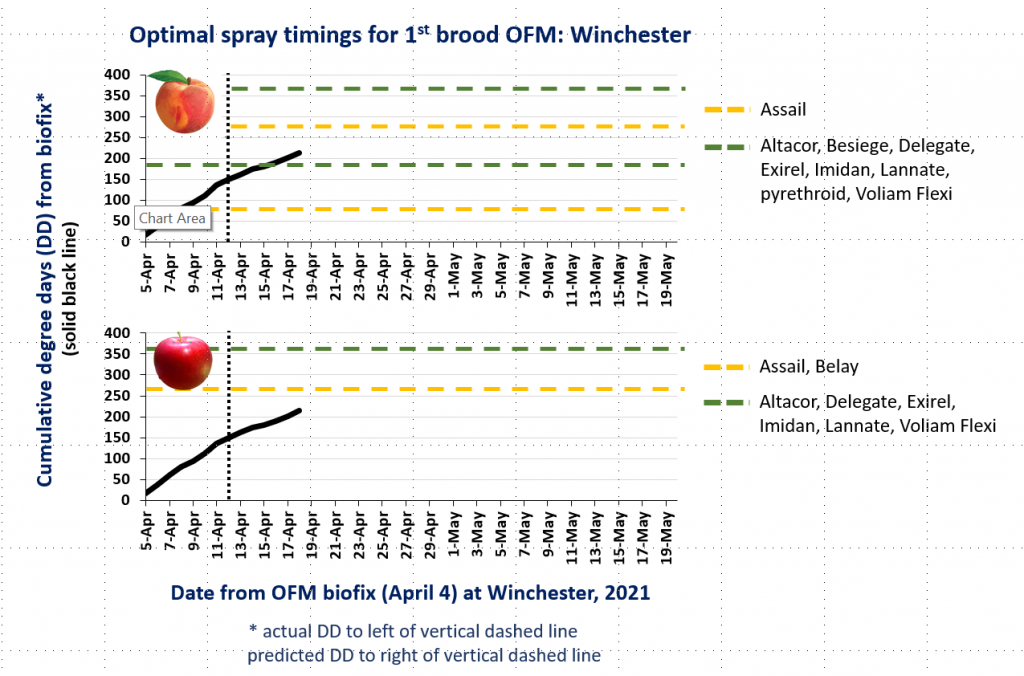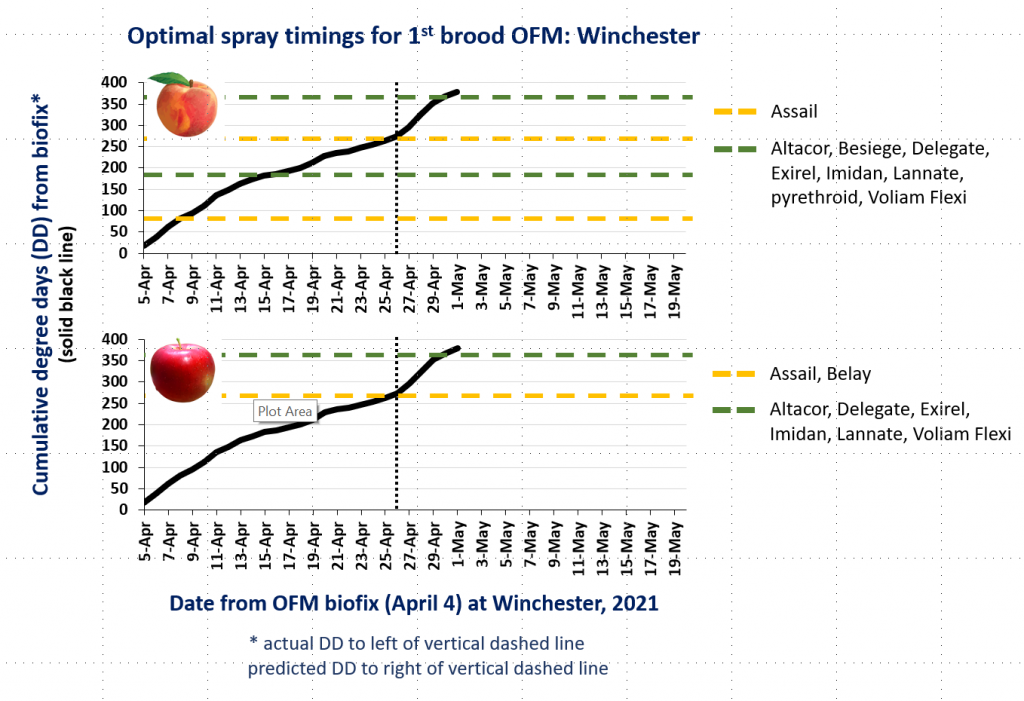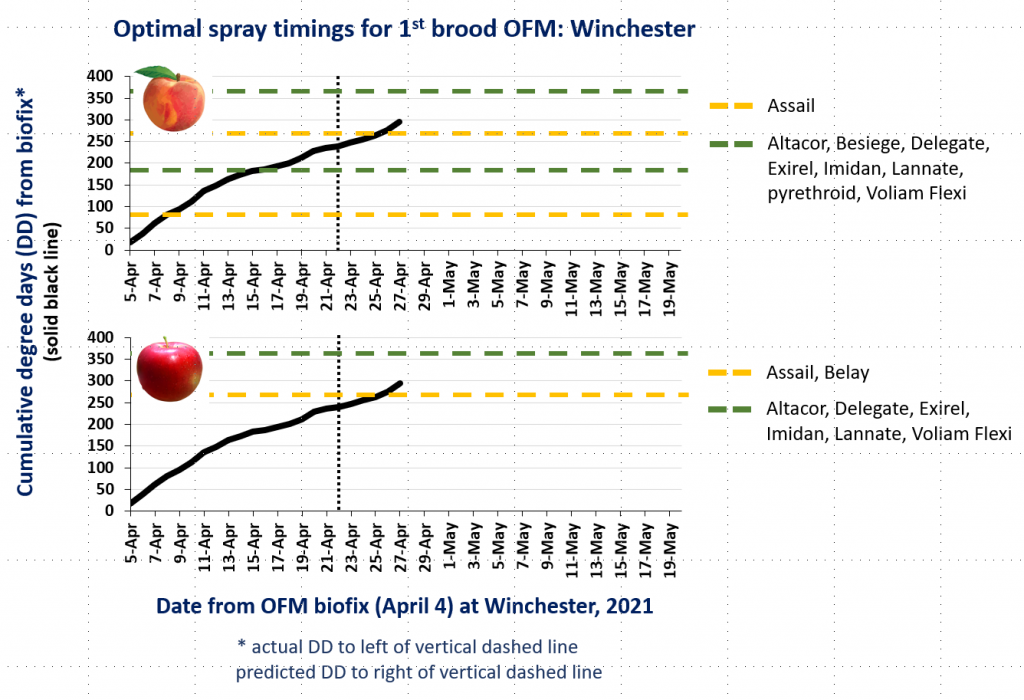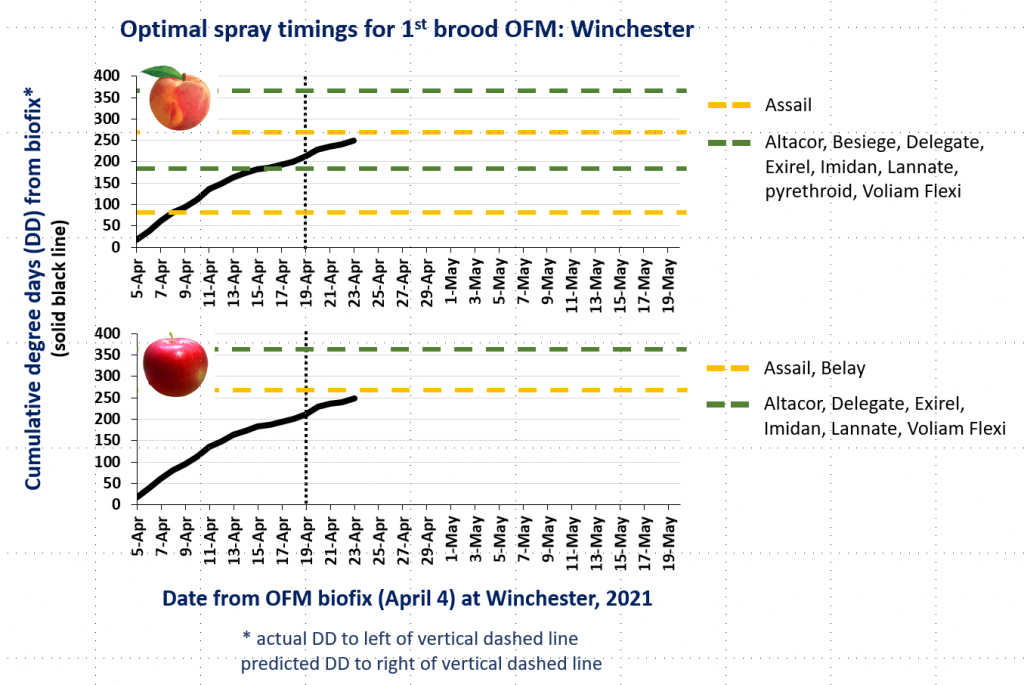After daily checks of our codling moth pheromone traps for the last couple of weeks, our first captures occurred during the evening of Tuesday, April 27. I anticipate that the warm days ahead will result in sustained captures, and we’ll continue to monitor this daily until biofix is set. Once that’s happened, I’ll begin twice weekly posts for degree day accumulations from biofix for and optimal spray timing recommendations for codling moth.
Monthly Archives: April 2021
OFM Degree Days and Optimal Spray Timing, 4.26.21
OFM Degree Days and Optimal Spray Timing, 4.22.21
OFM Degree Days and Optimal Spray Timing
OFM Degree Days and Optimal Spray Timing, 4.15.21
OFM degree-days from biofix and optimal spray timing
Last year I tried a new approach to reporting degree-day (DD) accumulations from biofix for OFM and CM, and optimal insecticide timings based on reaching critical DD accumulations related to the percentage egg hatch for each generation of the target pest. This approach received favorable feedback, and I’m going to use it again this year by posting updates on Mondays and Thursdays, which you should receive on Tuesdays and Fridays. The graphs below provide this information for OFM management in peaches and apples (CM biofix not yet established for 2021). Note that the solid black line shows daily DD accumulations from OFM biofix (April 4), the colored dashed lines are optimal timings for different insecticides, and the black vertical dashed line indicates actual DD (to its left) and predicted DD (to its right), based on forecasted temperatures. All of this information is taken from Cornell University’s NEWA forecasting site at http://www.newa.cornell.edu/. When the solid black line crosses a dashed colored line, read down to the x-axis from the point of intersection to find the date of recommended timing for specific products.

Oriental Fruit Moth Biofix at Winchester
We have had sustained and fairly decent captures of oriental fruit moth (OFM) at the Winchester AREC over the last two nights, and anticipate additional captures this evening. Consequently, I am calling OFM biofix in this area for April 4. Application of OFM sprayable pheromone now would be a strong option against the first generation of this pest by disrupting mating and the deposition of fertile eggs, thereby reducing the size of its population going forward. One application at the full rate may provide control for the duration of the first flight, although heavy or prolonged rain may necessitate a second application. Alternatively, the low rate of sprayable pheromone can be applied at 7-10 day intervals during the first flight. There are also a number of hand applied pheromone dispensers for mating disruption, with application rates per acre and duration of protection varying among products, as indicated on the label for each.




